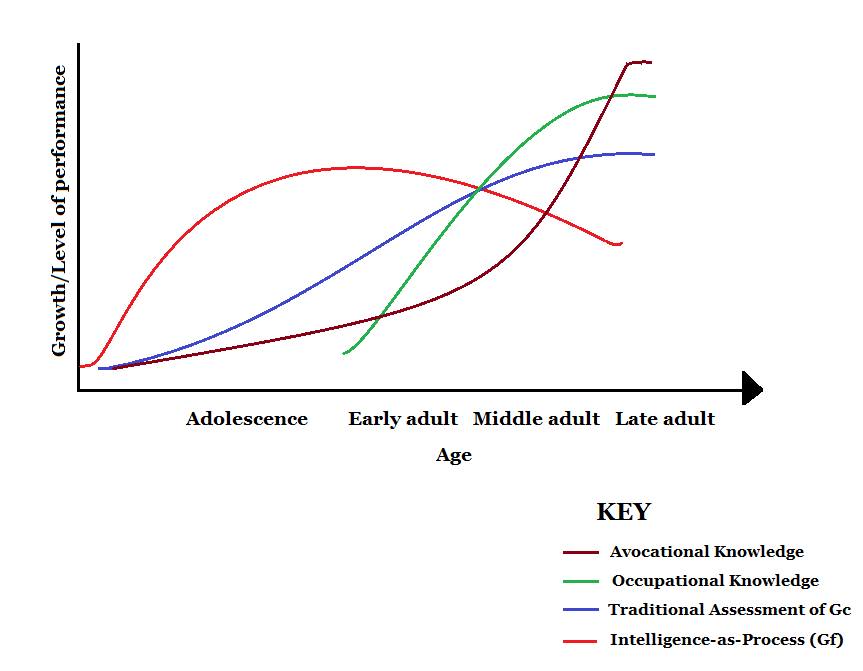|
Intelligent Quotient
An intelligence quotient (IQ) is a total score derived from a set of standardized tests or subtests designed to assess human intelligence. The abbreviation "IQ" was coined by the psychologist William Stern for the German term ''Intelligenzquotient'', his term for a scoring method for intelligence tests at University of Breslau he advocated in a 1912 book. Historically, IQ was a score obtained by dividing a person's mental age score, obtained by administering an intelligence test, by the person's chronological age, both expressed in terms of years and months. The resulting fraction ( quotient) was multiplied by 100 to obtain the IQ score. For modern IQ tests, the raw score is transformed to a normal distribution with mean 100 and standard deviation 15. This results in approximately two-thirds of the population scoring between IQ 85 and IQ 115 and about 2.5 percent each above 130 and below 70. Scores from intelligence tests are estimates of intelligence. Unlike, for examp ... [...More Info...] [...Related Items...] OR: [Wikipedia] [Google] [Baidu] |
Socioeconomic Status
Socioeconomic status (SES) is an economic and sociological combined total measure of a person's work experience and of an individual's or family's economic access to resources and social position in relation to others. When analyzing a family's SES, the household income, earners' education, and occupation are examined, as well as combined income, whereas for an individual's SES only their own attributes are assessed. Recently, research has revealed a lesser recognized attribute of SES as perceived financial stress, as it defines the "balance between income and necessary expenses". Perceived financial stress can be tested by deciphering whether a person at the end of each month has more than enough, just enough, or not enough money or resources. However, SES is more commonly used to depict an economic difference in society as a whole. Socioeconomic status is typically broken into three levels (Upper class, high, Middle class, middle, and Working class, low) to describe the three ... [...More Info...] [...Related Items...] OR: [Wikipedia] [Google] [Baidu] |
Francis Galton
Sir Francis Galton, FRS FRAI (; 16 February 1822 – 17 January 1911), was an English Victorian era polymath: a statistician, sociologist, psychologist, anthropologist, tropical explorer, geographer, inventor, meteorologist, proto- geneticist, psychometrician and a proponent of social Darwinism, eugenics, and scientific racism. He was knighted in 1909. Galton produced over 340 papers and books. He also created the statistical concept of correlation and widely promoted regression toward the mean. He was the first to apply statistical methods to the study of human differences and inheritance of intelligence, and introduced the use of questionnaires and Statistical survey, surveys for collecting data on human communities, which he needed for genealogical and biographical works and for his anthropometrics, anthropometric studies. He was a pioneer of eugenics, coining the term itself in 1883, and also coined the phrase "nature versus nurture". His book ''Hereditary ... [...More Info...] [...Related Items...] OR: [Wikipedia] [Google] [Baidu] |
Reliability (psychometrics)
In statistics and psychometrics, reliability is the overall consistency of a measure. A measure is said to have a high reliability if it produces similar results under consistent conditions:"It is the characteristic of a set of test scores that relates to the amount of random error from the measurement process that might be embedded in the scores. Scores that are highly reliable are precise, reproducible, and consistent from one testing occasion to another. That is, if the testing process were repeated with a group of test takers, essentially the same results would be obtained. Various kinds of reliability coefficients, with values ranging between 0.00 (much error) and 1.00 (no error), are usually used to indicate the amount of error in the scores." For example, measurements of people's height and weight are often extremely reliable.The Marketing Accountability Standards Board (MASB) endorses this definition as part of its ongoinCommon Language: Marketing Activities and Metrics ... [...More Info...] [...Related Items...] OR: [Wikipedia] [Google] [Baidu] |
Human Intelligence
Human intelligence is the intellectual capability of humans, which is marked by complex cognitive feats and high levels of motivation and self-awareness. High intelligence is associated with better outcomes in life. Through intelligence, humans possess the cognitive abilities to learn, form concepts, understand, apply logic and reason, including the capacities to recognize patterns, plan, innovate, solve problems, make decisions, retain information, and use language to communicate. There are conflicting ideas about how intelligence is measured, ranging from the idea that intelligence is fixed upon birth, or that it is malleable and can change depending on an individual's mindset and efforts. Several subcategories of intelligence, such as emotional intelligence or social intelligence, are heavily debated as to whether they are traditional forms of intelligence. They are generally thought to be distinct processes that occur, though there is speculation that they tie into trad ... [...More Info...] [...Related Items...] OR: [Wikipedia] [Google] [Baidu] |
Flynn Effect
The Flynn effect is the substantial and long-sustained increase in both fluid and crystallized intelligence test scores that were measured in many parts of the world over the 20th century. When intelligence quotient (IQ) tests are initially standardized using a sample of test-takers, by convention the average of the test results is set to 100 and their standard deviation is set to 15 or 16 IQ points. When IQ tests are revised, they are again standardized using a new sample of test-takers, usually born more recently than the first; the average result is set to 100. When the new test subjects take the older tests, in almost every case their average scores are significantly above 100. Test score increases have been continuous and approximately linear from the earliest years of testing to the present. For example, a study published in the year 2009 found that British children's average scores on the Raven's Progressive Matrices test rose by 14 IQ points from 1942 to 2008. Similar ... [...More Info...] [...Related Items...] OR: [Wikipedia] [Google] [Baidu] |




